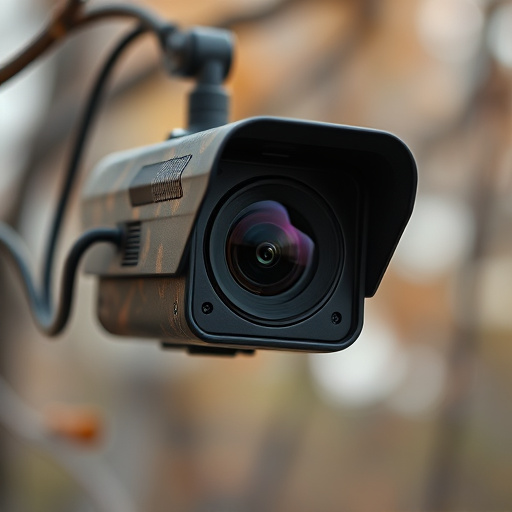In today's digital era, privacy concerns surge with the rise of wireless night vision security cameras indoors. Spy camera lens detection is crucial for identifying and mitigating threats. Specialized tools and smartphone apps use image recognition to scan surroundings for suspicious activity. While these cameras enhance security with clear darkness images, unsecured networks can lead to unauthorized access. Responsible use and robust data protection are essential. Users should look for unusual device behavior and scrutinize app settings, keeping software updated. Regular visual inspections, trusted security apps, and infrared technology create a defense against invasive surveillance, ensuring privacy and safety in indoor spaces.
In today’s digital era, awareness of hidden threats like wireless night vision security cameras indoors is paramount. Understanding spy camera lens detection using your smartphone is a powerful tool for safeguarding personal spaces. This comprehensive guide delves into the intricacies of identifying these lenses, exploring common signs and techniques accessible to all users. Additionally, it offers preventive measures leveraging smartphone technologies to enhance security against hidden cameras.
- Understanding Spy Camera Lens Detection: A Comprehensive Guide
- Wireless Night Vision Security Cameras Indoors: Their Role and Risks
- Identifying Spy Lenses on Your Phone: Common Signs and Techniques
- Preventive Measures: Securing Your Space from Hidden Cameras Using Smartphone Technologies
Understanding Spy Camera Lens Detection: A Comprehensive Guide
Understanding Spy Camera Lens Detection: A Comprehensive Guide
In today’s digital age, privacy concerns have led to an increased awareness of hidden surveillance devices like wireless night vision security cameras indoors. Spy camera lens detection is a crucial step in identifying and mitigating these potential threats. This process involves using specialized tools and techniques to uncover hidden lenses that might be embedded in everyday objects, such as mirrors, ceiling fans, or even regular light bulbs. By learning to recognize these lenses, users can protect their homes and workplaces from invasive monitoring.
With the help of advanced smartphone apps, individuals can now actively scan their surroundings for suspicious camera activity. These apps utilize image recognition algorithms to detect patterns and anomalies indicative of spy cameras. Whether you’re a concerned homeowner or a business owner seeking to enhance security measures, understanding how to identify these devices is the first step towards creating a safer environment.
Wireless Night Vision Security Cameras Indoors: Their Role and Risks
Wireless Night Vision Security Cameras Indoors play a pivotal role in enhancing home and business security, offering clear visuals even in complete darkness. Their advanced technology utilises infrared LEDs to illuminate surroundings, allowing for continuous monitoring without disrupting sleep or daily routines. These cameras are particularly useful for indoor spaces where traditional visible-light cameras might struggle with low-light conditions.
However, despite their benefits, there are risks associated with Wireless Night Vision Security Cameras Indoors. Privacy concerns top the list, as these cameras can capture sensitive information if not properly secured. Malicious actors could exploit unsecured networks to access camera feeds, posing potential threats to individuals and businesses alike. Additionally, false alarms and privacy invasions can occur due to their continuous operation, underscoring the importance of responsible use and robust security measures to safeguard data and maintain peace of mind.
Identifying Spy Lenses on Your Phone: Common Signs and Techniques
Identifying spy lenses on your phone is a growing concern in today’s digital age, where wireless night vision security cameras indoors have become increasingly sophisticated. While many apps claim to detect these hidden devices, there are certain signs and techniques that you can use to stay vigilant. One of the first steps is to pay attention to any unusual behavior on your device, such as a sudden increase in battery usage or excessive heating, which could indicate an active spy lens.
Additionally, examining the camera app for any hidden settings or permissions that you don’t recognize is crucial. Spy lenses often operate discreetly, but closer inspection might reveal additional options related to night vision or remote access. Keeping your phone’s software updated and using trusted security apps can also help detect and block unauthorized devices attempting to connect. Regularly checking the device’s recent activity log for any suspicious entries further enhances your ability to identify potential spy camera lenses.
Preventive Measures: Securing Your Space from Hidden Cameras Using Smartphone Technologies
To secure your space from hidden cameras, especially Wireless Night Vision Security Cameras Indoors, leverage smartphone technologies for proactive detection. Start by conducting regular visual inspections using your phone’s camera to familiarize yourself with familiar angles and potential hiding spots. Install apps designed to analyze video feeds for unusual patterns or objects, which could indicate the presence of spy cameras.
For added protection, utilize features like infrared technology and motion sensors offered by many smartphone-based security systems. These tools can help identify hidden devices emitting heat signatures or capturing unexpected movements. By combining these measures, you create a robust defense against invasive surveillance, ensuring your indoor spaces remain private and safe from hidden camera lenses.
Spy camera lens detection using smartphones is a crucial skill in navigating the digital landscape, especially with the prevalence of Wireless Night Vision Security Cameras Indoors. By understanding common signs and employing preventive measures, you can secure your space from hidden cameras. With the right techniques, you’ll be equipped to identify potential spy lenses, ensuring privacy and peace of mind in today’s tech-driven world.
